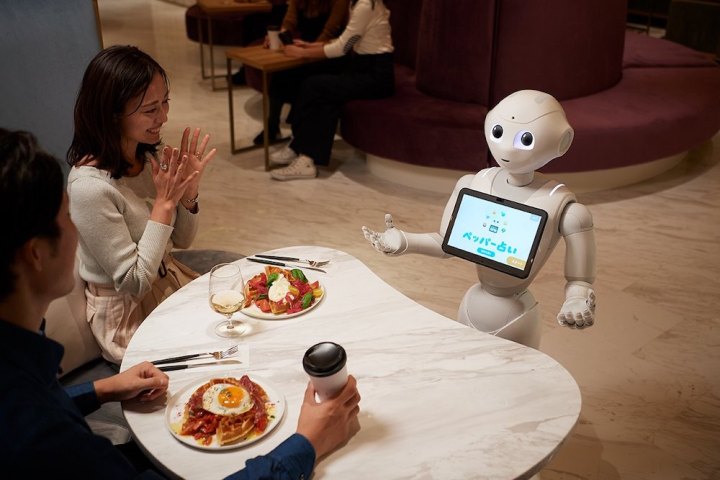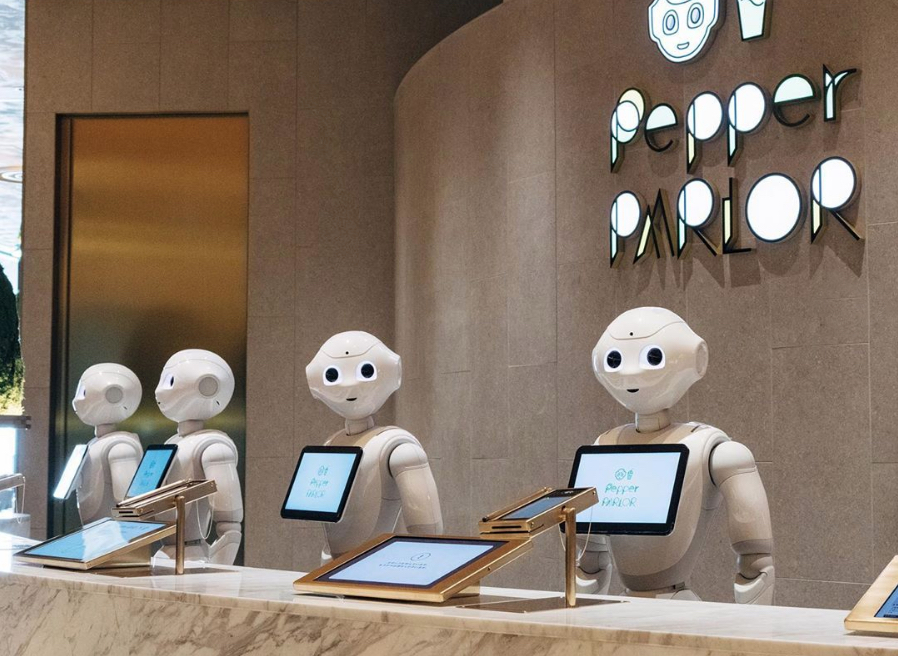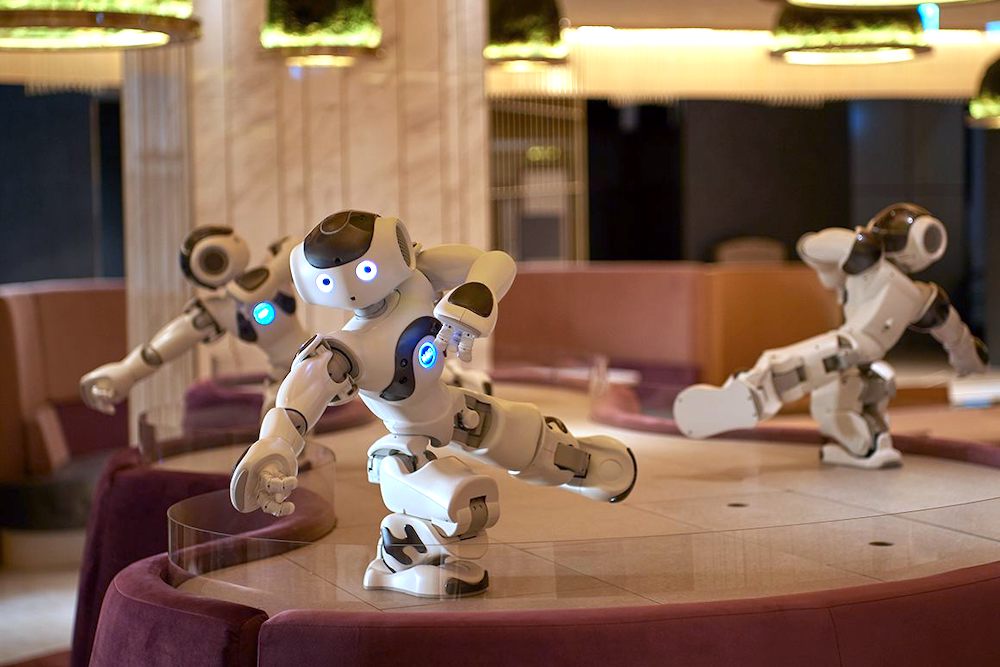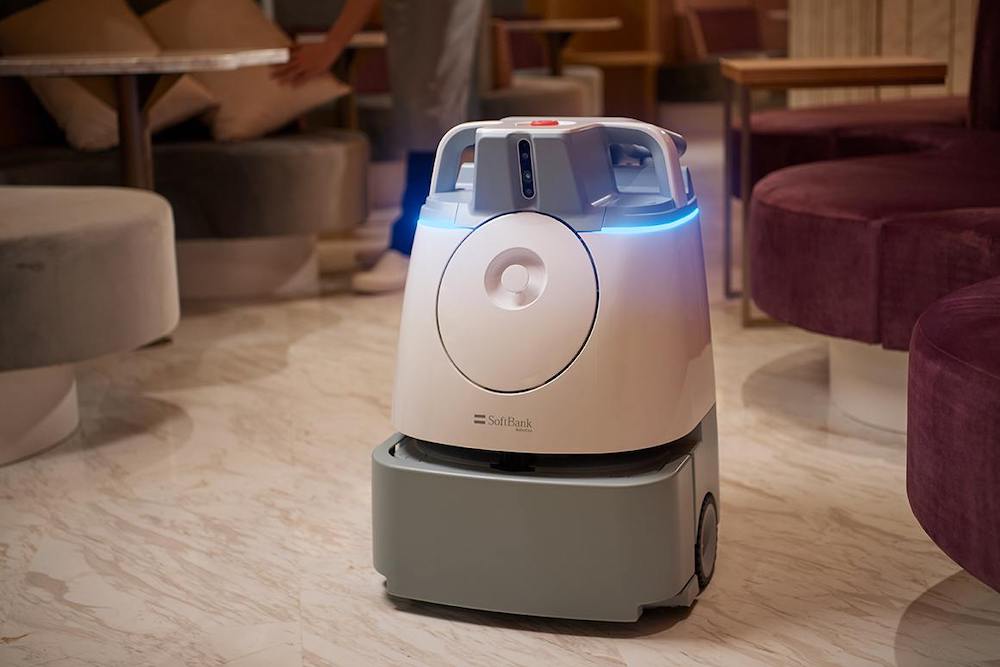
Japan already has a hotel staffed by robots, so why not a cafe?
Opening this week in Tokyo’s bustling Shibuya district, tech giant SoftBank is opening a new eatery staffed by lots of its Pepper robots.
You’ve probably already heard of Pepper. SoftBank’s robotics unit launched the 120-cm-tall talking robot in 2015, and since then it’s been put to work in a variety of locations, from hospitals and stores to airports and museums.
At the new Pepper Parlor cafe in Tokyo, the robots greet customers, take orders, and chat with customers at their table.
Besides Pepper, SoftBank is also deploying two of its other robots, Nao and Whiz. Nao, which is about half the size of Pepper, will perform table dances (no, not that kind of table dance, Pepper Parlor is a family place, after all), while Whiz will use its A.I.-powered cleaning technology to keep the place spotless.
It may seem odd that SoftBank is entering the cafe business, but the company says it wants to use the site to help it learn more about how people interact with robots so that it can improve the design of its current high-tech offerings.
“We will be able to build know-how by managing the store on our own,” SoftBank executive Kazutaka Hasumi told the Asian Review. “That way we will be able to propose functions that companies want in robots.”
Japan’s population is shrinking and aging rapidly, and with a government that seems unlikely to embrace mass immigration, the nation is facing a shortage of workers in a growing number of industries. In response, the country is putting more resources than most into developing robots and other technology that can do some of these jobs.
Limited skills
As for Pepper, its skills are currently rather limited. In its previous roles at places like hospitals and airports, it wasn’t performing surgical procedures or conducting security checks. Rather, the android is used more as a form of entertainment, or to provide information for those who interact with it. It’s getting smarter all the time, though, and can recognize faces and emotions, and respond through voice or by showing messages on its torso-based tablet.
We just hope that that the wheel-based bot fares better at the new cafe than it did at a grocery store in Scotland last year. After working at the store for a week, the owners had to let Pepper go after deciding it was too limited in its capabilities. Still, over time, SoftBank’s robot will only improve, perhaps opening it up to more job offers in the future.
Editors' Recommendations
- Pepper robot’s future uncertain as SoftBank suspends production
- Jack Ma steps down from Softbank board
- Soft robots can be formed into firm shapes using light and magnets
- This soft and flexible leech-inspired robot can climb walls





